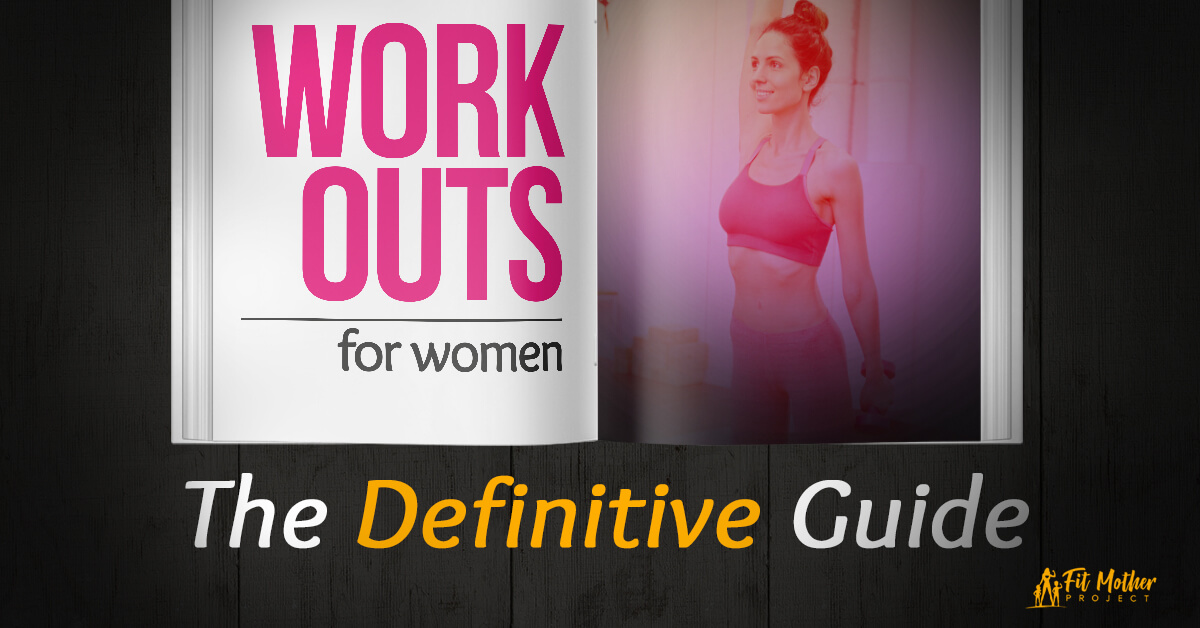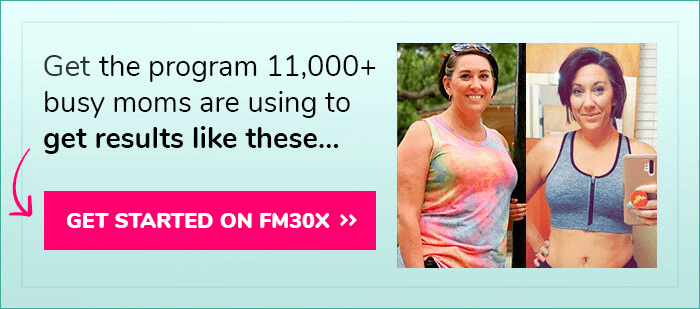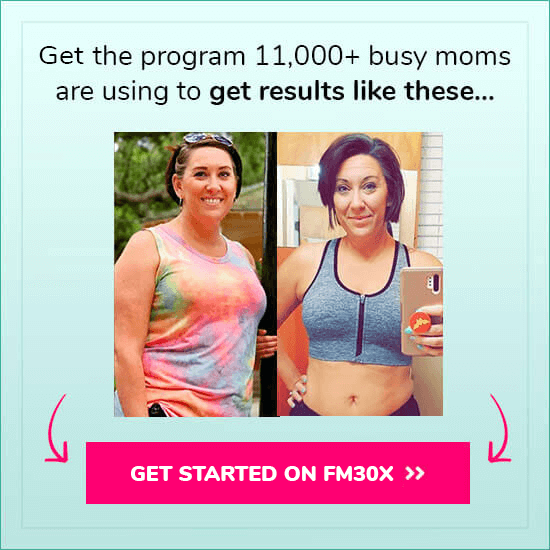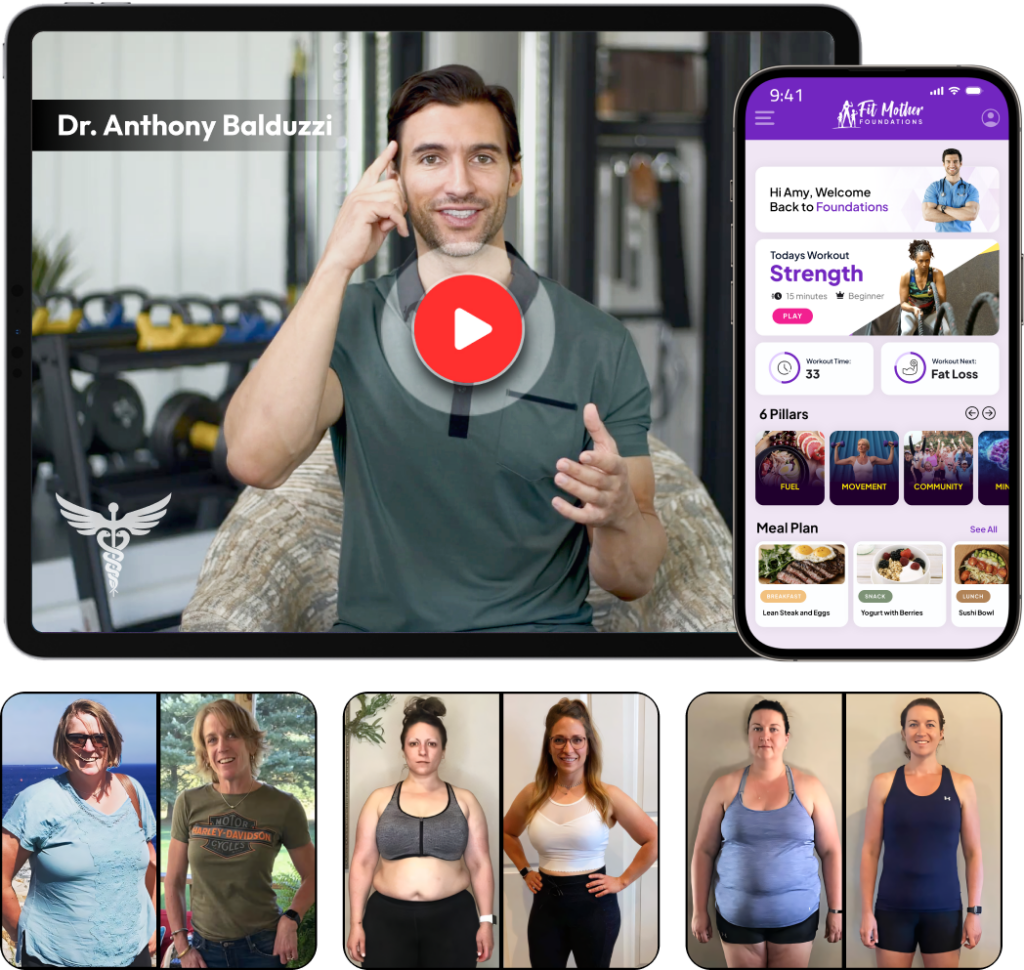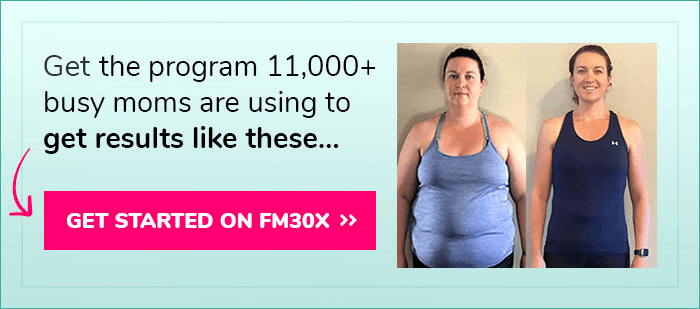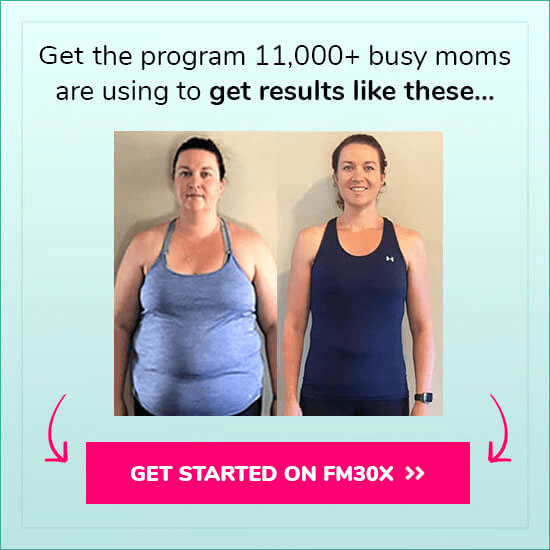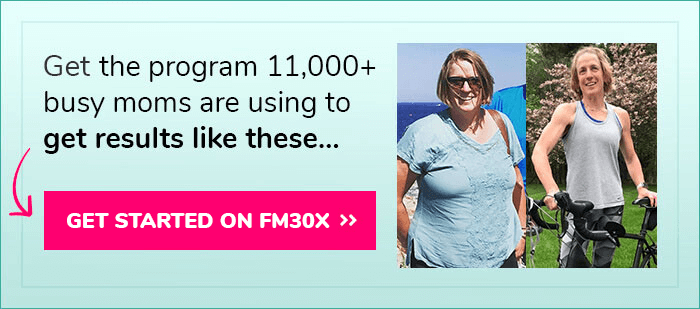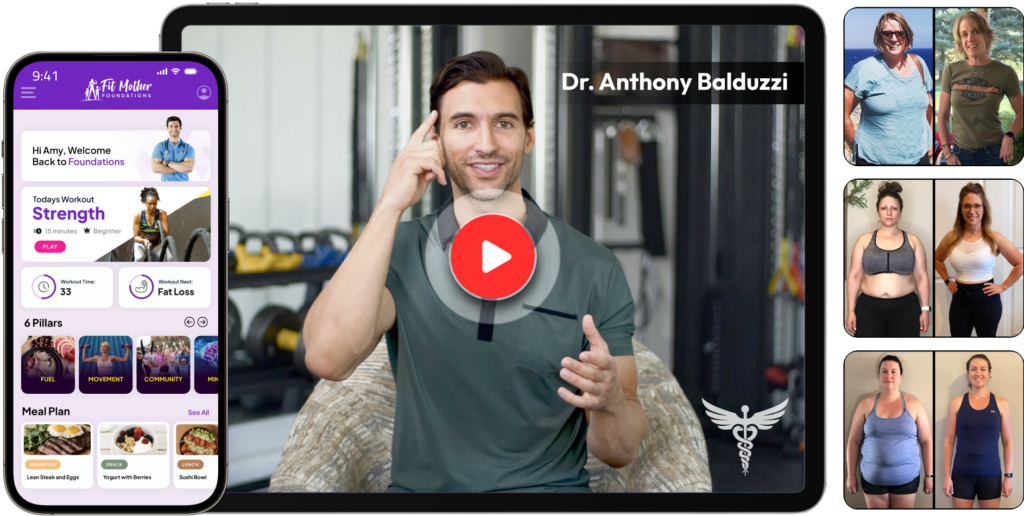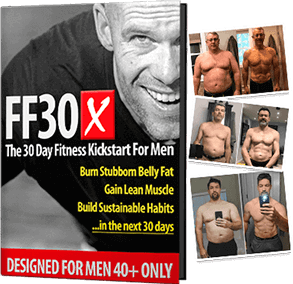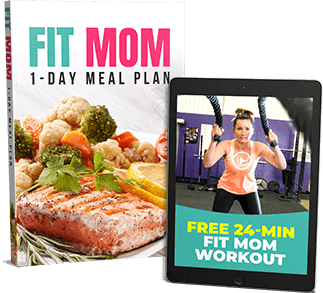Adopting a fitness routine and getting into top physical shape is a goal for a lot of women. But how can you tell which workouts for women are right for you?
It can definitely be tough sorting through all of the information (and misinformation) that we are bombarded with every day regarding workouts and nutrition
So the question is, what really works?
The truth is, health and fitness are not one size fits all.
While eating a nutritious diet and working out is the general blueprint for a healthy lifestyle, there are a lot of different factors that play into this depending on your age, your goals, and your current level of fitness.
And don’t let the online ads fool you! There are no “quick fix” or miracle supplements to get you into the best shape of your life.
If you really want to transform your body and your overall health, it takes dedication to consistent workouts that work specifically for you.
This definitive guide to workouts for women will give you the information you need to develop a plan that you will enjoy and that will challenge you as you embark on your fitness journey!
Make sure you're eating right, too, with our Definitive Guide to Healthy Eating for Women!
In just 6-weeks on our FOUNDATIONS Program, you'll transform your health and body, for the rest of your life!Join our 6-Week Program...
You'll Gain Health for Life!
Workouts Across the Age Spectrum
Exercising and staying active on a regular basis is one of the best ways to maintain strength, endurance, and to keep your body “young.”
However, the fact is that over time, women will need to adapt their workouts to their bodies’ capabilities.
The “best” workouts for women will be different depending on your age, experience, goals, and current level of fitness.
As women age, hormone levels fluctuate and body composition changes.
Aging and reaching perimenopause or menopause will cause a decrease in estrogen. This leads to decreased bone strength, muscle loss, and a decreased ability to recover from exercise.
Testosterone is another hormone that decreases with age. This is one of the most potent anabolic (muscle-building) hormones that the body produces.
While you may think that testosterone levels are only important for guys, it turns out that this hormone plays a key role in women as well.
When testosterone levels fall, lean body mass decreases, something known as sarcopenia.
Women who are inactive start losing up to 3-5% of their muscle mass per decade after age 30.
But studies have shown that you can maintain muscle mass by performing resistance exercises. This means by being active, you can at least hasten this age-related decline in lean body mass.
Other issues associated with aging, like joint pain from arthritis and overuse injuries, can impact workouts.
By tailoring your workouts to your level of fitness and physical abilities you will avoid injuries and continue to stay active and lead a high quality of life throughout all phases of life.
Find out how YOU can live a long and healthy life with this one simple philosophy.
Women in their 30s
Women in their 30s still have high muscle-building potential and aerobic endurance.
Plus, at this age, your body is still able to recover quickly after exercise.
This means you really aren’t limited as far as the types of workout that you choose. This is a great age to really push your limits and challenge yourself with intense workouts that you enjoy.
Plyometrics and high-intensity intervals are excellent exercises to build aerobic and anaerobic endurance and build strength.
Weight lifting is also important to boost estrogen and testosterone levels and stave off muscle loss and increase bone strength.
Staying physically active in your 30s will set you up for a lifetime of consistent exercise.
This doesn’t mean you have to engage in extreme exercise every day, as your body still requires recovery.
But you can take time on your off days for stretching, meditation, and recovery exercises.
Women in their 30s also have the strength, flexibility, and enhanced recovery to lift heavier weights.
This is important to build a strong core foundation as you age.
When choosing the amount of weight to use, figure out your one-rep max for each specific exercise.
This is the most weight that you can lift if only performing a single repetition. Then for your sets, pick a weight that is about 70-75% of your one-rep max.
If you want to see muscle growth, you need to teach your muscles to overcome increased resistance.
Write down your workouts, and keep track of the amount of weight and reps that you perform during every session.
This will help you keep track of your progress.
Should women lift weights? Discover all of the benefits of weight lifting for women!
Women in their 40s
While 40 isn’t old, this is the age when womens’ bodies start to take a little more time to recover, especially after tough workouts.
This means taking measures before and after workouts to ensure that your muscles are getting the repair that they need.
Warm up and cool down are necessary at every age, but become even more important as you move through your 40s.
Along with muscle strength, flexibility starts to rapidly decline with age.
A dynamic warm-up will get the blood flowing to your muscles and connective tissues, and have you primed for a killer workout.
This is also the age to really focus on mobility and balance.
Stability workouts that utilize equipment like Bosu and Swiss balls will really help you work on muscle imbalances so that you can remain injury free and feeling great.
This will set you up for strong workouts in your 50s and beyond.
Warm up should include some light cardio along with dynamic stretching.
Dynamic stretching during a warm-up has been shown to increase power output when compared to static stretching, and will make your workouts more effective.
Try adding this dynamic warm up session prior to your strength and cardio workouts:
Warm-Up
Start with 5-10 minutes of light cardio.
This can be jogging, rowing, biking, jump rope, or any activity that starts to raise your heart rate.
Follow this with some dynamic stretching before starting the main workout.
Stretches
Inchworm
- Start on your hands and feet with your hips in the air in an inverted V position.
- Walk your feet as far forward as possible while keeping your legs straight.
- Then, walk your hands out, extending your body into a plank position.
- Then raise your hips up again into an inverted V.
- Repeat 5 times.
Leg Kicks With Arm Reach
- Kick your left leg out straight in front of you while reaching for your toes with the right hand.
- Then kick your right leg out and reach to your toes with your left hand.
- Repeat for 10 reps on each side.
Arm Circles
- Stand tall with your arms outstretched to your sides and parallel to the floor.
- Make small circles with your arms going forward for 10 reps, then backwards for 10 reps.
- Then make larger circles forward for 10 reps, and backwards for 10 reps.
Back and Chest Rotations
- Start down on all fours with your knees below your hips and wrists below your shoulders.
- Place your left fingertips behind your left ear.
- Rotate your upper body to the left, so that your left elbow points up to the ceiling.
- Then twist your torso back to the starting position.
- Continue for 8 reps on the left, then switch sides and repeat on the right.
Does stretching burn calories and help you lose weight? Learn the truth about stretching and weight loss.
Women in their 50s
Most women will enter menopause in their late 40s or early to mid 50s.
While these hormonal changes will definitely impact your body, this shouldn’t be an excuse for gaining weight or losing strength.
If anything, health and fitness becomes more important for women over 50.
Maintaining aerobic endurance is crucial for women over 50.
The prevalence of chronic diseases like diabetes and hypertension increases with age, and it is essential to be proactive in your health to avoid these health issues.
Combined training with both cardio and resistance exercise not only improves fitness, but can also prevent or lessen the impact of chronic health problems.
Being consistent with your workouts will also help stave off sarcopenia and decrease the risk of osteoporosis that begins to develop in older women.
Weight training is vital, but be sure to remain within your limits.
Avoid unneeded stress on your knees and back, as injuries in these areas tend to be the most common at this age.
As for all ages, a dynamic warm up should be done prior to your workouts, along with a cool down and some static stretching afterwards.
Since static stretches can actually hinder your workouts, you should save these until the end.
At this point you are done with your high power work and can focus more on flexibility and range of motion.
This full-body workout for women over 50 is easy on the body and helps to strengthen bones and muscles.
Women in their 60s
Working out later in life is important for so many reasons.
Exercise promotes healthy living, improved endurance, and decreased risk of injury when performing everyday activities.
Strength training and weight-bearing exercises will also maintain lean muscle mass and bone strength.
Resistance training has been found to be important in supporting muscle growth later in life by slowing the loss of muscle mass.
Falls also tend to become more prevalent at this age, so this is also the time to work on balance exercises that improve proprioception and neuromuscular control.
There are a lot of individual health variables at this age, and you should discuss any medical issues with your doctor before starting a new workout or exercise routine.
This will ensure that all of your workouts are not only effective but also safe.
In just 6-weeks on our FOUNDATIONS Program, you'll transform your health and body, for the rest of your life!Join our 6-Week Program...
You'll Gain Health for Life!
Best Workouts For Women As You Age
You’re only as old as you feel, and age is just a number, right?
This is definitely true, however this doesn’t mean you should be doing the same intensity or style of workouts at 50 or 60 as you did at 20.
As women age, tendons and connective tissue lose elasticity.
If you try to do too much during workouts, especially high intensity plyometric exercises, you increase your risk of developing injuries that could prevent you from being active at all.
However, this doesn’t mean that you shouldn’t do any type of interval or circuit training as you get older.
These types of exercises should still be included in your workout programs since they promote strength gains and cardiovascular fitness.
You just may need to modify the moves to make them safer.
Women should also incorporate mobility, stretching, and balance exercises.
This makes routines like yoga and Pilates great choices to get in great shape and build a solid core foundation in the process.
You can also use equipment like exercise balls to work on balance and core strength.
Incorporating body weight exercises and using equipment like resistance bands is another great way to stay in shape as you get older while also staying safe in the process.
Learn how to have good balance as you age with these 5 exercises!
Fitness Needs in Men vs Women
Studies have shown that during strength training women tend to convert more muscle to type 1 muscle fibers, while men tend to convert their muscles to type 2a fibers.
Type 1 muscle fibers are also known as the “slow-twitch” muscle fibers.
Type 1 muscle fibers are more efficient over long periods of time, while type 2 muscle fibers are better for short bursts of speed.
This means that women tend to be more resistant to fatigue during exercise, and have better endurance and recovery.
So what does this mean for women setting up a workout program?
Since women’s muscle fibers are more resistant to fatigue, they tend to do better with higher reps.
In fact, studies have shown that women can generally do more reps at lower weight when compared to men.
In addition to doing well with higher reps, women also do well with slower tempo lifting compared to explosive bursts.
So when doing workouts for women, really focus on both the concentric and eccentric phases of lifting.
Not only will this improve your strength gains, but it will allow you to focus on proper form and avoid injury.
Another interesting finding is related to how hormones are stimulated by exercise in women compared to men.
This is important because testosterone levels decrease rapidly in women following menopause, and is one of the reasons why muscle mass decreases even more after this time.
To see a rise in testosterone, women should engage in exercises that are high volume and increase metabolic demand.
For example, one study from Medicine & Science in Sports & Exercise found that a low-volume, single-set circuit produced only a slight increase in resting testosterone after 12 weeks.
However, resting testosterone returned to baseline at 24 weeks of training.
In contrast, a high-volume, multiple-set program produced a large increase in resting testosterone at 12 weeks and an even larger increase at 24 weeks of training.
This means that women should choose full-body exercises with multiple sets to make their workouts more effective.
By stimulating an increase in testosterone levels you can help decrease further lean muscle loss while also increasing muscle growth.
Learn about gender differences in diet and exercise as we sort the myths from the facts.
Nutrition During and Around Your Workouts
Sometimes, it can be hard to figure out when and what you should be eating before and after workouts.
If you eat too close to your exercise session you could suffer from cramps and nausea as your food still digests.
However, if you go too long between eating and a workout you may not even be able to finish the workout.
What you consume before a workout can play a major role in your performance.
Plus, your pre-workout nutrition will also determine how well your body and muscles respond to your training once you are finished.
Women that are trying to lose weight might think that skipping a meal before their workouts is the best way to achieve this goal.
However, that really isn’t the case.
Sure, if you consume fewer calories than you burn, weight loss occurs.
But if you aren’t properly fueled for your workouts, you can’t give a full effort.
This means your training will suffer and you won’t be able to complete your exercises at your maximum effort.
In the end, this means less muscle mass, and a lower resting metabolic rate.
So to get the most benefit from your hard efforts in the gym, you should aim to have a pre-workout snack ideally about 2 to 3 hours before your workout.
Since you need energy, this should be a carbohydrate-rich snack of about 200 to 300 calories.
Also, it doesn’t matter if you’re doing a short intense workout, lifting heavy weights, or planning a long cardio session.
Eating prior to exercising will give you the energy you need for maximum results.
To avoid gut issues while working out, avoid foods that are high in fiber or that contain ingredients such as sugar alcohols that can cause gas and bloating.
For your pre-workout, pick simple carbs that can be digested more quickly, like a banana or toast and jelly.
You can experiment around your sessions to figure out what works best for each of your planned workouts.
After a workout, you want to get your muscles the fuel they need so that you don’t waste all the hard work you just did.
It has been the belief for a while now that the “anabolic window” or time when protein synthesis in muscles is greatest is within 30-60 minutes after a workout.
However, a meta-analysis in the Journal of the International Society of Sports Medicine showed that the window actually lasts from four to six hours.
After finishing a hardcore exercise session your body has depleted its glycogen stores and your muscles are ready to take up whatever fuel it sees.
A food source that contains both protein and carbohydrates is the ultimate form of nutrition after a workout.
A 2021 study found that glycogen synthesis rates were enhanced when carbohydrates and protein were eaten together after exercise compared with eating carbohydrates or protein alone.
Some good choices include a protein shake, peanut butter and an apple, or yogurt and nuts.
Research has even found that chocolate milk has an ideal ratio of carbohydrates, protein, and fat to refuel after tough exercises.
These 7 principles of nutrition are always true, no matter what your diet consists of.
Supplementing Your Fitness
The health industry is filled with supplements that promise just about anything-from bulking you up, to slimming you down, to giving you limitless energy.
But are these products worth the money?
One thing that is important to remember about supplements is in the name itself.
They are simply a supplement to a healthy diet.
No matter how many different pills or powders you consume, you can’t undo unhealthy eating habits.
Supplements are simply there to help fill in any gaps in nutrition that you may have.
As a busy mom, you may not always have the time to consume all of the vitamins and minerals to support your body and immune system on a daily basis.
This is where dietary supplements can come in handy.
Another area where supplements are beneficial is when you don’t have the time after a workout to consume enough protein right after exercise.
Protein shakes and powders are a great option here.
Find out about magnesium supplement benefits as we discuss magnesium for sleep and anxiety as well as weight loss.
Full-Body Workouts
When women are putting together a weight lifting program, one of the biggest decisions is figuring out whether to do full-body or split workouts.
There are pros and cons to splitting up your workouts to target specific body parts versus performing full-body workouts.
Ultimately, the choice will depend on your individual fitness goals.
Target Major Muscles Groups More Frequently With Full-Body Workouts
Full-body exercises are great for a number of reasons.
For one, these exercises enable you to have killer workouts that target all of your major muscle groups.
And when you are utilizing these types of exercises, you can achieve a high level of results in under an hour a day, and as little as three days a week.
This is because you are hitting each muscle group in a single workout session instead of isolating your muscle groups to one day a week.
And research has shown that increasing the frequency of exercising each muscle group can lead to bigger strength gains when compared to isolating muscle groups and only targeting them once a week.
Increase Fitness With Full-Body Workouts
In the past, you may have tried workout programs that had you target specific body parts on each day of the week. For example, one day may have been “leg day” and another day “back and bicep day.”
But studies have shown that full-body workouts can be more beneficial for improving fitness and building muscle.
A full-body workout engages all of your muscle groups during one session and takes many forms — high-intensity interval training (HIIT), high-intensity resistance training (HIRT), bodyweight workouts, or conventional weightlifting.
Full-Body Exercises Help Decrease Muscle Soreness
Not only will these full-body workouts build muscle, but they will also allow you to go into your next workout without being extremely sore from your previous exercise day.
Since you aren’t doing countless reps on one body group, this will allow for better recovery and an ability to give your best effort for your next workout.
Maximize Muscle Building Potential
Full-body workouts are excellent because you are able to make the most out of muscle synthesis after each workout.
For one, you are giving your body enough time to recover before the next full-body workout.
In addition, by not taking off too much time between workouts so that you can hit the best window for muscle building potential.
This in turn will increase lean muscle mass and decrease body fat percentage.
Full-Body Exercises Help Avoid Overtraining
By splitting up your workouts into full-body exercises you can avoid overtraining specific muscle groups.
For example, if you specifically focus on legs one day, there is a higher risk of overtraining as you try to cram all of your leg work into one day.
However, if you are able to do three workouts a week that incorporate full-body exercises, you can focus on all muscle groups simultaneously during these workouts.
By repeating this three times weekly, you will still get in the desired weekly sets and reps without causing excess muscle damage.
This will allow you to lose weight and be able to build a great-looking physique.
This full-body, at-home workout requires no equipment!
Split Workouts
While there are tons of benefits to full-body workouts, there can be downsides as well.
If you don’t take enough recovery between your workout sessions, you can still overtrain and accumulate fatigue.
This can make your workouts less productive.
Another issue with full body workouts is that it is tougher to build maximum strength in specific areas since you are moving from one muscle group to the next.
However, if your primary goal is weight loss and overall strength building, full-body workouts are still going to be the top choice.
Split routines divide workouts into specific body parts or areas of the body.
There are different ways to incorporate routines into your weekly schedule.
Similar to full-body workouts, split workouts have a time and place for their best uses.
The three most common types of splits include:
- Working 1-2 muscle groups each day — for example, back and biceps or chest and triceps.
- Upper/Lower Split — for example, upper body, then lower body training days.
- Push/Pull/Legs Split — for example, pushing muscles are trained one day, then pulling muscles the next, and legs the following.
Split Workouts Can Maximize Strength Gains
If you are only targeting specific muscle groups once or twice a week you will have more energy to push your limits.
It’s unrealistic to push high intensities often without adequate rest, so splits can be a solid option for really maxing out your lifting weight while still giving you enough recovery time between muscle groups.
Splits are fantastic for the lifters that want to vest all of their energy on a daily basis into one or two muscle groups.
If you are specifically looking for muscle hypertrophy, split workouts can be a good option.
Decrease Fatigue Levels
While volume and intensity can highly dictate fatigue, splits are usually a safer bet to manage overall fatigue levels due to the multiple days of recovery in between certain muscle groups and exercises.
Full-body workouts can be a little tougher to manage when it comes to fatigue accumulation if you are doing these exercises three to four times a week.
Split Workout Cons
Split workouts are not always reasonable for lifters with very limited gym time.
Also, if your goal is improving on a particular lift, then splits can be limiting due to lower training frequencies for certain muscle groups/lifts
In just 6-weeks on our FOUNDATIONS Program, you'll transform your health and body, for the rest of your life!Join our 6-Week Program...
You'll Gain Health for Life!
So What’s the Best?
As already mentioned, the best workouts for women will depend on your current fitness goals.
The more specific goals are in nature, then the more specific a program will need to be.
If your goal is to specifically target building bigger muscles, then using some form of split workouts to really focus on these muscle groups would be the way to go.
However, if you are like most busy moms, time is limited. Between your job, family, and other obligations, you need to be efficient and effective with your gym time.
This makes full-body functional workouts a great option.
Unfortunately, we all don’t have hours on end to spend in the gym, which brings up the topic of choosing what’s realistic for your lifestyle.
Oftentimes, when this aspect is not accounted for, this change will come naturally from feeling “burnt out” in daily life while performing one style of training.
Find out how stress is killing us as we reveal some important research about stress.
How Often to Workout?
For moms new to weightlifting, the first step is figuring out how often to train a week.
A review of the scientific evidence has found that to optimize muscle growth, resistance training should occur at least twice a week, and possibly three times weekly.
For women just beginning a new strength training program, you should start with two days and work yourself up from there to make sure you are getting enough rest between sessions.
To reach your full muscle-building potential, research suggests that you should train each muscle 2-3 times a week.
If you have an open schedule and your goal is to bulk up specific muscle groups, you can incorporate split workouts and target specific body parts each day.
For example, Monday could be back and biceps day, Tuesday is chest day, and so on.
If you are like most moms, you are pretty busy and may only have a few days that you can devote to formal exercise.
This may mean doing 2-3 full-body workouts a week to hit every muscle group.
And full-body workouts have shown to be quite effective in building lean muscle mass when done three times weekly.
A study in the Journal of Strength and Conditioning Research found that a training frequency of 3 days per week produced superior results compared to once a week.
No matter which type of breakdown you choose, one of the key things in every workout is to exercise at the right intensity.
This is one of the big determining factors in reaching your highest fitness potential.
When talking about strength training, this equates to the weight you are lifting and the volume (the number of sets and reps).
If you are new to working out it can be tough to figure out what amount of weight you should be lifting to target the optimal intensity.
A study published in the European Journal of Sports Science found that lifting around 80% of your one-rep max leads to significant strength gains.
This is a good starting place to use to make sure you are getting the most out of your weight lifting sessions.
This video will help you create your own home workout plan for weight loss and toning!
Can You Spot Reduce Fat?
A lot of women have “trouble areas” that they want to get rid of.
Unfortunately, no matter how many sit-ups or tricep dips you do, you can’t get rid of a “muffin top” or underarm fat by simple spot reduction.
To lose fat anywhere on your body, you have to burn more calories than you consume.
You may think that cardio is the only way to burn enough calories to lose weight, but that is far from the truth.
Both cardio and strength training are essential.
A full-body resistance workout can burn a significant amount of calories, and the benefits for fat loss don’t stop there.
By building lean body mass you will be increasing your metabolic rate at rest so that you are burning more calories throughout the entire day.
Step one to sculpting those problem areas!
Strength training should include full-body workouts, along with workouts specifically designed to hit your core muscles.
No, you cannot spot reduce fat.
But good core and abdominal work is essential for overall fitness, and to make those underlying abdominal muscles appear once you shed some of the belly fat.
In addition to strength training, you should also incorporate cardio workouts.
By raising your heart rate through aerobic and anaerobic exercises you will be burning calories at a high rate.
Plus, cardio activities will also increase how many calories you burn after your workout, something known as Excess Post-Exercise Oxygen Consumption (EPOC).
The higher the intensity and duration of your workout, the more efficient your body will be at burning calories in the hours following.
Recent research suggests that continuous cardio and interval training produce similar calorie-burning effects, however, interval training can be done in a shorter period of time with the same benefits.
This means that you don’t have to spend hours on a treadmill to add cardio to your fitness routine.
High-intensity intervals and circuit workouts can be just as, if not more, effective at burning fat as long continuous cardio workouts.
These tips will help you lose belly fat fast!
Losing Weight vs Gaining Muscle
When women first start a workout program, they usually have a goal in mind.
Most commonly, this is to lose X amount of pounds over a certain time period.
On the other hand, some moms may already be at their ideal weight and instead want to put on some extra muscle.
More commonly, most women want a combination of weight loss and strength gains.
Again, this is why the “best” workouts for women need to be individualized.
If you are overweight and looking to lead a healthier lifestyle, losing weight is going to be a top priority.
However, in the process of losing weight, you also are going to want to gain muscle.
Body composition and improved muscle mass are key indicators of health, not just the number on the bathroom scale.
If you want that strong, fit body, you need to shed fat without losing lean mass to keep your physique looking great.
This means building muscle at the same time. Losing fat and gaining muscle can really go hand in hand.
Lean muscle mass increases your resting metabolic rate and keeps your body burning fat even at rest.
Plus, strength training will help you not only gain, but also to preserve muscle mass even as you are losing weight.
Losing and gaining at the same time seem counterintuitive.
To lose fat, you need your body to be in a caloric deficit. And to gain muscle, you need a calorie surplus.
However, there are ways to lose fat while still maintaining, and even gaining muscle mass.
The key is to incorporate resistance and weight training along with cardio.
A research study published in Medicine & Science in Sports & Medicine found that the key to losing fat without losing muscle is the combination of both resistance training and cardiovascular training.
This study compared groups that performed either endurance activity, resistance training, or a combination of both.
The results found that the combination group was able to lose about 16 pounds of fat while still gaining 10 pounds of muscle!
This is an example of how increasing lean muscle mass really impacts your metabolism.
By increasing your calorie burn with endurance exercises you will lose weight.
And by also incorporating strength training you will be able to maintain muscle mass.
Find out why strength training is important to combat muscle loss and promote longevity!
Putting On Muscle Mass
If you are already at your goal weight and are strictly looking to put on some muscle, you will want to prioritize strength training.
Aim for six to eight reps each set, doing three to four sets of each exercise.
This will allow you to use heavier weights so that you can really work on muscle building.
While you can do lighter weights with higher reps to build muscle, studies have shown that using heavier weights is superior for maximizing strength adaptations.
But this doesn’t mean you have to completely neglect cardio work.
High-intensity intervals, circuit training, and plyometric exercises are excellent ways to enhance your fitness and build muscle.
While HIIT is typically seen as a great cardio option to burn a lot of calories in a short amount of time, these workouts provide much more.
One study from the University of North Carolina found that HIIT was effective at increasing muscle size and quality in overweight adults.
And don’t forget your diet! As mentioned above, it is important to choose the right types of foods before and after your workouts.
Be sure to consume high-quality protein and carbohydrates after your workouts to aid in muscle recovery and growth after your lifting sessions.
These are the essential building block for muscle growth and will help you get the most out of each and every workout.
How much protein do we need per day? Calculate your daily protein intake!
Proper Form
If you take one thing away from each workout, it should be that quality is more important than quantity.
Ripping off hundreds of bicep curls means nothing if you are throwing you are flailing your arms wildly, or using your momentum to swing the weights up.
Proper form becomes even more important as you get older.
Focusing on posture and slow controlled movements is critical on two fronts.
One is that you will be targeting the correct muscles throughout each exercise.
And secondly, you will decrease your risk for injury.
Try incorporating these free-weight exercises for women into your workouts!
Proper Gear and Equipment
If you are working out at a gym, chances are that they will have all of the equipment necessary to complete your workouts.
You can utilize either machines or free weights, and there are pros and cons to each of these choices.
Free weights are typically the best option for full-body workouts because the movements force you to engage your entire body through the exercises, especially your core.
Using free weights results in more functional movements that you would perform in everyday life.
However, machines have a place in your workout arsenal as well.
For example, if you are coming back from an injury, using a leg press machine may be a better option than doing barbell squats.
With the machine, you are locked in and have less chance of low back injuries.
Lat pull downs and other pulley machines are other examples of great pieces of equipment that really work your muscles, and when done correctly, still engage all of your small stabilizing muscles.
If you aren’t sure how to correctly use gym equipment, always be sure to talk to the fitness staff and trainers.
They will be more than happy to demonstrate the correct movements. Plus, you may get some free training tips at the same time!
It can be difficult to find commitment and motivation for working out. We’ll teach you how!
Staying Safe Outdoors
A lot of moms out there really enjoy exercising outdoors.
The beauty and sounds of nature are an amazing background for some serious workouts.
The outdoors can be a great distraction while you challenge yourself to some intense workouts
While most people think of outdoor activities as being limited to things like running or biking, the truth is you can move virtually any workout outside to break up the monotony of your training sessions.
But, there are some key things to remember when exercising outdoors, especially in extreme temperatures.
Cold Weather Workouts
If you enjoy exercising outdoors, you don’t have to stop in the winter.
But the change of season means that it gets dark earlier at night.
This makes it even more important to stay smart and safe during your workouts.
Still, just because it’s dark outside doesn’t mean you can’t get a great workout.
The early mornings and evenings in the winter are still great times to get in your cardio as long as you’re prepared.
If you are walking or running outdoors before the sun rises or after sunset you should wear a reflective vest or headlamp.
You can even carry a small flashlight so that others can see you.
You also should be prepared for running on icy or snowy sidewalks and roads.
If you know that your route will be a bit slippery, you can equip your running shoes with spikes or cleats.
During the colder days of fall and winter, you should wear layers.
This allows you to remove clothing as your workout progresses and your muscles start warming up.
Choose fabrics that wick moisture away from your skin so you're not exercising with wet fabric hanging off of you.
The inner layer should be a moisture-wicking fabric, so it wicks away sweat and you're not chilled.
The second layer should be a warmer layer, like a long sleeve shirt.
If there is rain or snow you can add a third protective layer, such as a windbreaker.
If you are out for a run or walk you can tie the top layer around your waist when you start to warm up. You can also choose a loop route that comes back by your house or car so that you can leave excess clothing there as you continue your workout. Planning your workouts ahead of time will keep you safe and comfortable during your workouts.
Sweating it Out in the Summer
While spring and summer is a great time to get outdoors, extreme heat and humidity can lead to dangerous health issues including heat exhaustion, and even heat stroke.
Always check the weather forecast before heading out the door so that you are prepared for the conditions.
Getting out in the early morning or late evening is a good option to avoid the hottest parts of the day.
If you plan your workouts before the sun rises you can avoid the sun blasting down on you.
Of course remember that if you are planning a run or ride along roadways, be sure to wear a headlamp and reflective clothing if you are out when it’s still dark.
On hot days be sure to take along hydration or plan pit stops with fluids and electrolytes.
Becoming dehydrated will not only hamper your workout efforts, but can lead to dangerous health situations.
If the heat index is dangerously high, you should consider keeping your workout indoors.
When exercising outdoors in the summer, it is important to know the signs of heat exhaustion so that you can stop and receive help before it progresses to heat stroke.
Signs of heat exhaustion include cool and clammy skin, nausea, vomiting, a rapid heart rate, or feeling faint or dizzy.
If you notice any of these symptoms, stop your workout immediately and seek medical attention.
Heat stroke is a true medical emergency and results in hot and dry skin, lack of sweating, a throbbing headache, and even loss of consciousness.
Outdoor workouts are an excellent way to change up your routine and get in great aerobic shape.
Taking steps to keep yourself safe will keep you healthy enough to continue these workouts.
And no matter what time of the year you are working out, always be sure to tell your family and friends where you will be and what time to expect you back.
This will add another layer of safety to your workouts if things don't go as planned.
Get the whole family active with this awesome backyard workout!
Sample Workout Plan For Fit Moms
OK, so we’ve talked about the general approach to workouts, but a lot of busy moms out there like to have their workouts planned out so that they can plan around their already crazy schedules.
Making a schedule of your workouts will not only keep you accountable, but it will allow you to plan out your days so that you keep enough time to recover between your training sessions.
Here is a general blueprint for what a typical week should incorporate.
You can move around the days to fit your schedule, but you should have at least 48 hours between your weight lifting sessions to ensure proper muscle recovery.
- Monday: Full Body Resistance Workout
- Tuesday: Rest
- Wednesday: HIIT Workout
- Thursday: Stretching/Balance Workout
- Friday: Rest
- Saturday: Full Body Resistance Workout
- Sunday: Endurance Cardio (Run, bike, walk, swim, etc)
There is no better time than now to transform your health and your body.
Incorporating a balance of workouts that utilize resistance training and cardio you can target every muscle group with an intensity that will raise your metabolism.
This will help you achieve a healthy weight while also building a fit and powerful physique.
You can tailor these workouts for women to your own individual schedule and can choose workouts that you actually enjoy!
No matter what your age or current level of fitness, there is a workout plan for all the awesome moms out there!
Holly is an osteopathic physician, runner, triathlete, and fitness and nutrition enthusiast. She is board certified in nephrology and internal medicine, has a bachelors degree in dietetics and is a certified personal trainer with NASM-PES certification. Holly has completed four full ironmans, twelve marathons, countless half ironmans, olympic distance triathlons, half marathons and numerous other road races. Holly joined the Fit Father Project in May 2019 as a regular writer, contributing articles on health, wellness, exercise, and nutrition. She has also recently qualified for the 2020 World Championships for Ironman 70.3, in New Zealand!![]()
Fit Mother Project is the answer you’ve been looking for. Inside the program, you’ll receive: Our Fit Mother 30X Program (FM30X) is the answer you’ve been looking for. Inside FM30X, you’ll receive: The FOUNDATIONS Program is created by Dr. Anthony Balduzzi for Women 40+ who want Lifelong Health. In just 6-Weeks following FOUNDATIONS, you'll experience: FOUNDATIONS has transformed 60,000 lives! Are you ready to experience true lasting health & results?If you’re a busy mom who wants to finally lose weight,
get healthy, and actually keep the pounds off for good,
this is the simple program you’ll love sticking to…
If you’re a busy mom who wants to finally lose weight,
get healthy, and actually keep the pounds off for good,
this is the simple program you’ll love sticking to…
LEARN MORE ABOUT FM30X »
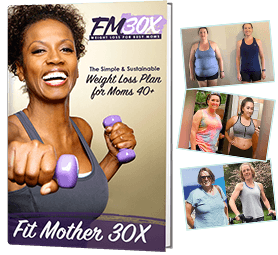
Learn More About FM30X

Join our 6-Week Doctor Designed Health Program.
You'll Gain Foundational Health for the Rest of Life.
*Please know that weight loss results & health changes/improvements vary from individual to individual; you may not achieve similar results. Always consult with your doctor before making health decisions. This is not medical advice – simply very well-researched info on workouts for women.


